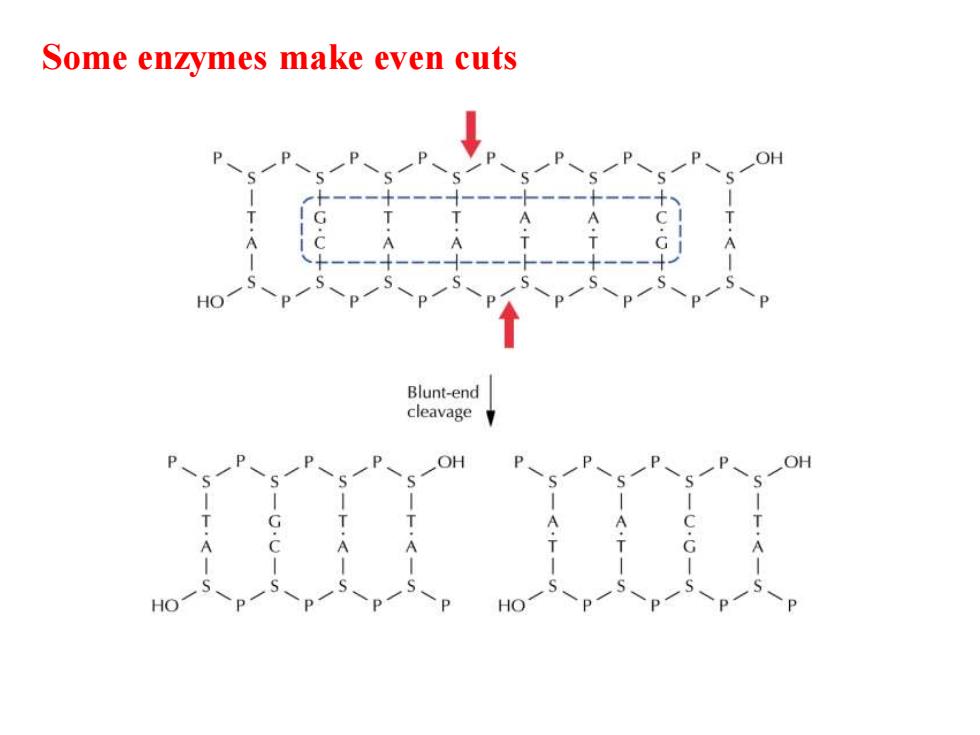
Some enzymes make even cuts HO Blunt-end cleavage OH
Some enzymes make even cuts
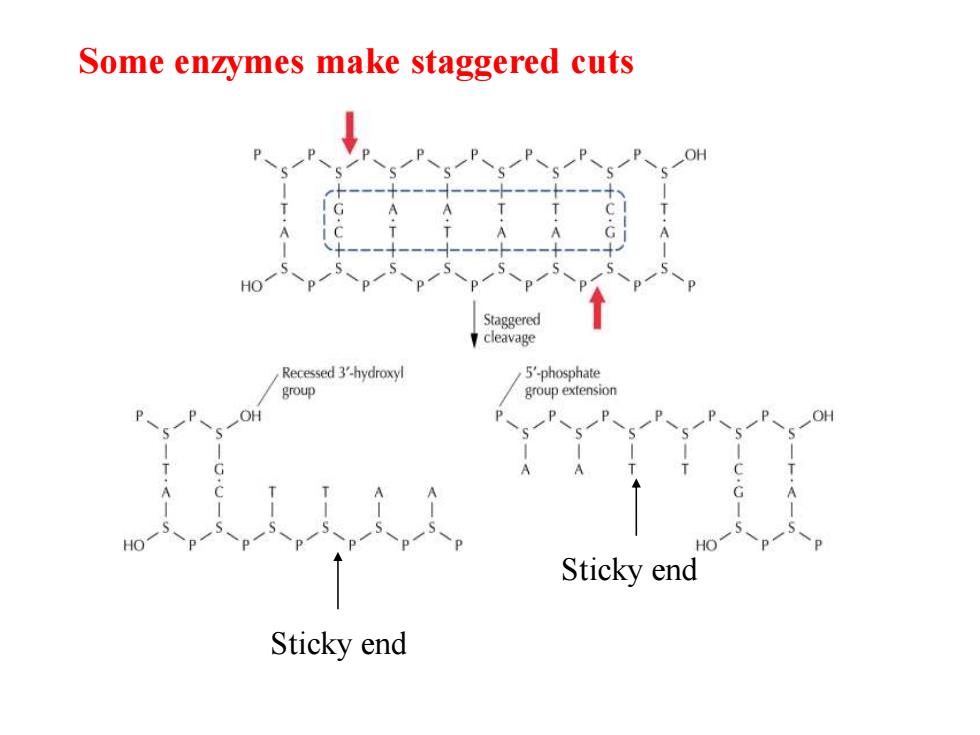
Some enzymes make staggered cuts OH HO Staggered cleavage Recessed 3'-hydroxyl 5'-phosphate group group extension HO Sticky end Sticky end
Sticky end Sticky end Some enzymes make staggered cuts
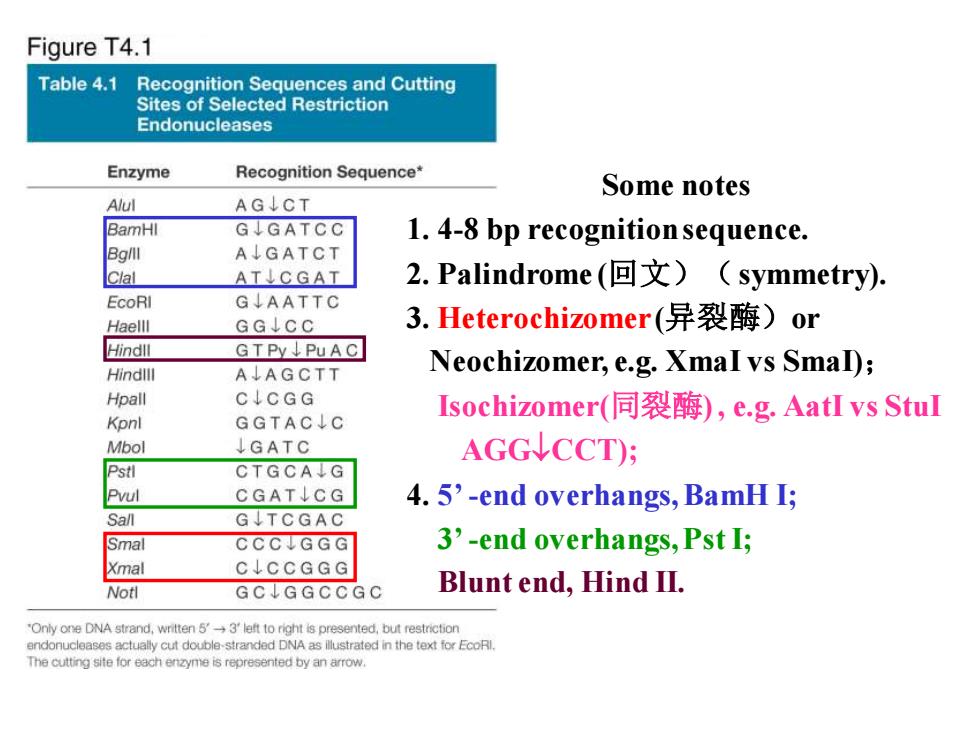
Figure T4.1 Table 4.1 Recognition Sequences and Cutting Sites of Selected Restriction Endonucleases Enzyme Recognition Sequence* AGICT Some notes Alul BamHI G↓GATCC 1.4-8 bp recognition sequence. Bglll ALGATCT Clal ATCGAT 2.Palindrome(▣文)(symmetry). EcoRl G↓AATTC Haelll GG↓CC 3.Heterochizomer(异裂酶)or Hindll GTPy↓PuAC Hindlll A↓AGCTT Neochizomer,e.g.Xmal vs SmaD; Hpall C↓CGG GGTAC↓C Isochizomer(同裂酶),e.g.AatI vs Stul Kpnl Mbol ↓GATC AGGVCCT); Pstl CTGCAJG Pvul CGAT↓CG 4.5'-end overhangs,BamH I; Sanl GJTCGAC Smal CCCJGGG 3'-end overhangs,Pst I; Xmal C↓CCGGG Notl GC↓GGCCGC Blunt end,Hind II. "Only one DNA strand,written 5'3'left to right is presented,but restriction endonucleases actually cut double-stranded DNA as illustrated in the text for EcoRl. The cutting site for each enzyme is represented by an arrow
Some notes 1. 4-8 bp recognition sequence. 2. Palindrome (回文)(symmetry). 3. Heterochizomer (异裂酶)or Neochizomer, e.g. XmaI vs SmaI); Isochizomer(同裂酶) , e.g. AatI vs StuI AGGCCT); 4. 5’ -end overhangs, BamH I; 3’ -end overhangs, Pst I; Blunt end, Hind II
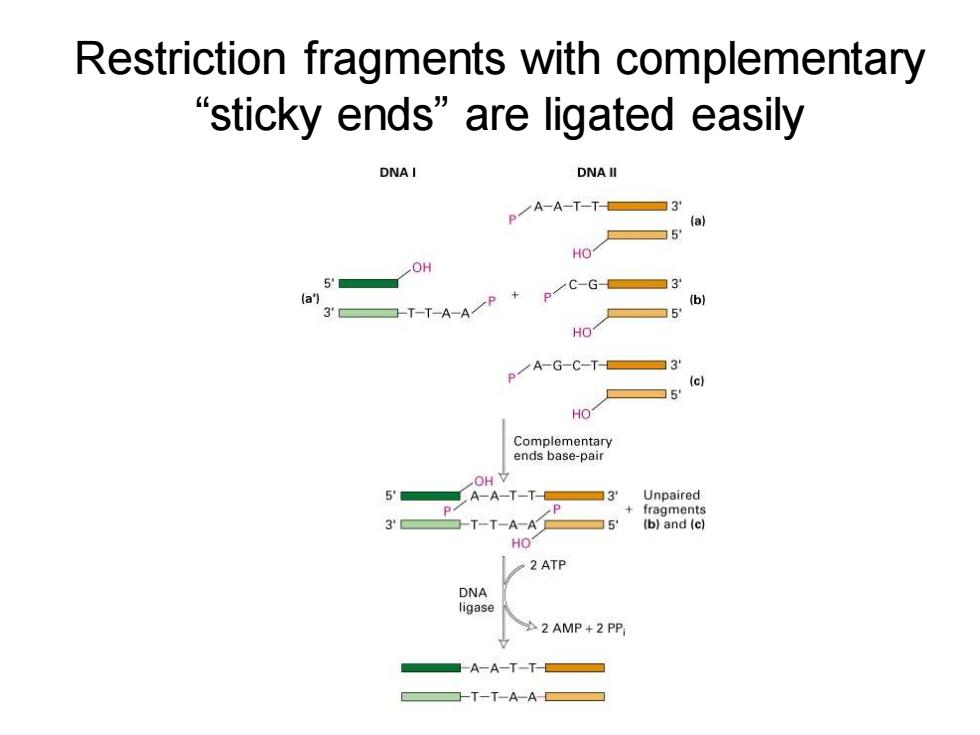
Restriction fragments with complementary “sticky ends'”are ligated easily DNA I DNA II p/A-A-T-T-E3 a HO OH 5' (a1 pC-G3 3' ☐T-T-A-AP b ☐5 HO /A-G-C-T☐3 fe) ☐5 HO Complementary ends base-pair OH 5 A-A-T-T ☐3 Unpaired P +fragments -T-T-A-A ▣5' (b)and (c) HO 2 ATP DNA ligase A2 AMP +2 PP -A-A-T-T T-T-A-AC
Restriction fragments with complementary “sticky ends” are ligated easily
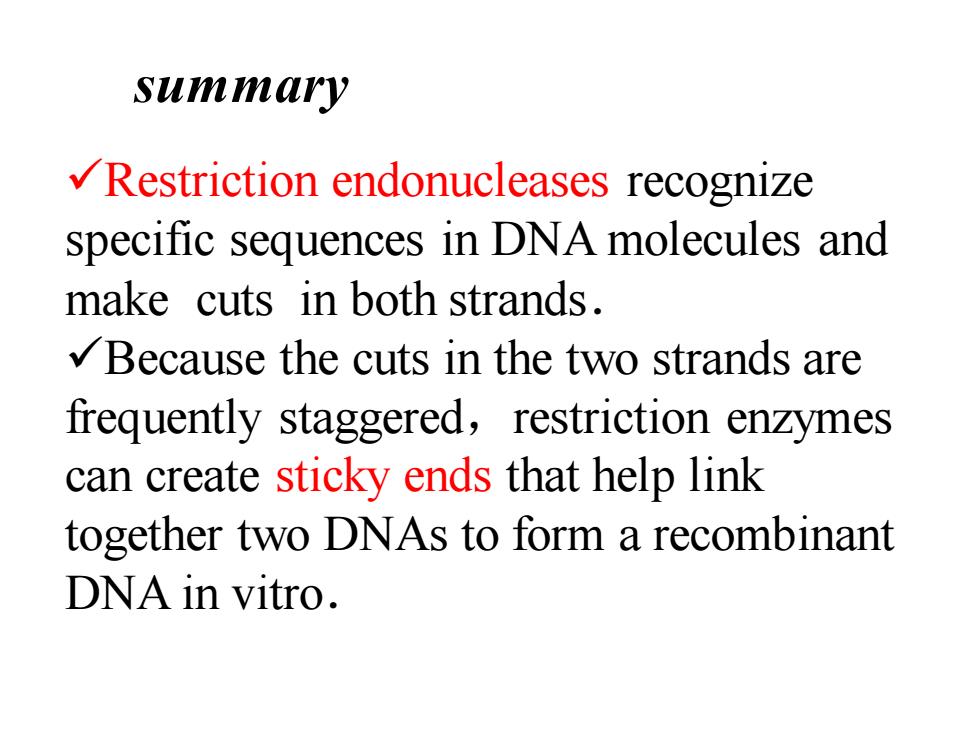
summary Restriction endonucleases recognize specific sequences in DNA molecules and make cuts in both strands. Because the cuts in the two strands are frequently staggered,restriction enzymes can create sticky ends that help link together two DNAs to form a recombinant DNA in vitro
✓Restriction endonucleases recognize specific sequences in DNA molecules and make cuts in both strands. ✓Because the cuts in the two strands are frequently staggered,restriction enzymes can create sticky ends that help link together two DNAs to form a recombinant DNA in vitro. summary